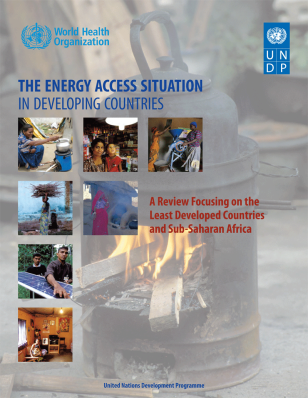Energy Access in Developing Countries

English
DownloadEnergy Access in Developing Countries
November 26, 2015
Policies and national programmes must be drastically enhanced to tackle in any significant way energy poverty. This cannot be done effectively without a clear understanding of the energy access situation in countries, including understanding regional and national trends, rural/urban disparities, and the range of energy sources typically used in the households of the poor. Yet, existing global data sets and reports often provide insufficient information on energy access, focusing instead mostly on energy production and consumption.
This report was commissioned to begin bridging this gap, especially for the Least Developed Countries (LDCs) and sub-Saharan Africa, where energy access is especially constrained. In addition to compiling statistics from countries on access to electricity and modern fuels, as well as drawing on the forthcoming WHO Household Energy database and the International Energy Agency's World Energy Outlook 2009, this report supplements existing global reports with available statistics on fuel types, improved stoves used for cooking, and mechanical power. It summarises as well the latest evidence on the health impacts attributable to indoor air pollution resulting from household use of solid fuels for cooking and heating. It also estimates the number of additional people that would have to gain access to modern energy services by 2015 under different scenarios, including scenarios that are compatible with meeting national targets and the MDGs and are disaggregated for LDCs and sub-Saharan Africa.

 Locations
Locations




